
Welcome to the GAMER ZONE, dood. Check out these rad titles - you might find a new favorite!
Jump to section:
Hypnospace Outlaw
Zeno Clash Series
Eternal Cylinder
Alisa
Maize
Infra
Haunted PS1 Collections
Garage: Bad Dream Adventure
Machinika Museum
Raw Metal
Empires of the Undergrowth
Games I played this year + my thoughts on them:
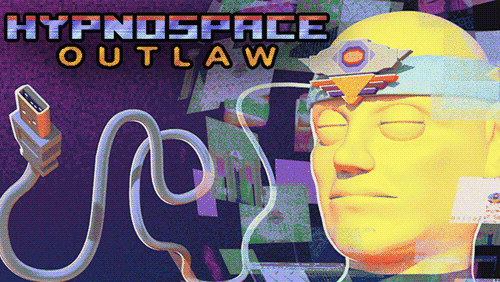
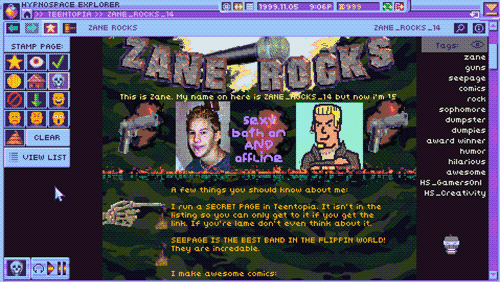
Hypnospace Outlaw
Release:
2019
Premise:
Alternate history 90s internet. "Hypnospace" is a service that lets people browse the web while they sleep, and it's your job to moderate it.
Gameplay:
Detective/puzzle game played via interacting with a detailed fictional computer OS.
Comments:
I'm sure plenty of you already know about this game - playing it feels a lot like browsing Neocities. In fact, this game is what got me interested in this sort of thing in the first place. If it weren't for Hypnospace, I probably never would've started to appreciate cheesy personal web pages or crackhead wmp skins - but now I'm obsessed with that kinda stuff. In that way, this game really did have an impact on me and that's why I consider it to be my favorite game of all time.
There are three majorly impressive things about this game. One, the amount of content it contains - there's hundreds upon hundreds of web pages to browse, each with something interesting to see, and many of them change over time. Two, the soundtrack is like five hours long and a collaboration between many different artists with different styles. It is very good. And, most importantly, number three: the world this game creates is very intricate and detailed, and somehow it manages to remain consistent right down to the tiniest minutiae. I'm so used to games seemingly "forgetting" their own lore and contradicting previously established rules. But thats not something you'll have to worry about with Hypnospace, it really starts to feel real the further in you go - to the point where you might forget you're playing a video game. bonus tip: only play the game in pitch black, super late at night when you're half asleep for max immersion.
One other thing I'd like to compliment is the narrative(s). The main story is intriguing enough on its own, but you can see plenty of smaller-scale stories play out in the background if you pay attention to the websites of various side characters. It can actually get pretty emotional at times, accentuated even more by the excellent music.
All in all, this is a legendary game and if you like spending time on Neocities but haven't played Hypnospace Outlaw, you HAVE TO check it out. Plus a sequel has been announced and I'm hyped as FUCK.
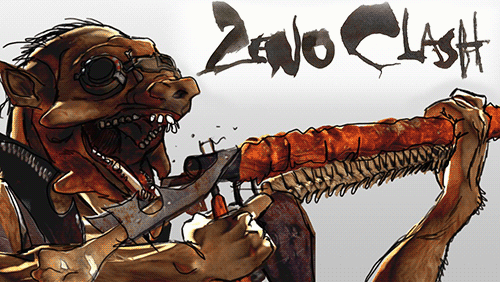
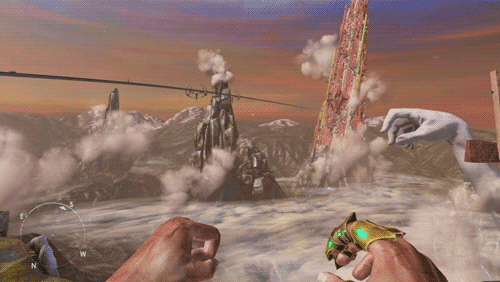
Zeno Clash series
Release:
2009, 2013
Premise:
Punch the shit out of people in a punk fantasy world with crazy and surreal visual design.
Gameplay:
First person brawler - first game is linear, second is more open with light rpg elements.
Comments:
The main draw of this game is the eccentric art direction, but there's plenty of other appeal too. The first person punching is a lot of fun, with satisfying heavy attacks and cool details like seeing people's faces deform in slow motion as you uppercut them (in the second game at least).
The story of each game is actually kinda cool too - while the first one is more of a small-scale squabble between individuals, it hints at a lot of interesting worldbuilding. The second game delves deep into this lore, and the themes of this universe start to shine through. "Punk Fantasy" is not just a gimmicky descriptor, the society this game takes place in is anarchical, with no law or even written language. When characters from an advanced civilization arrive, they try to introduce concepts such as "rules" and "prison", a word that the inhabitants of the city have literally not heard before. There's a lot of cool ideas here and the story does a decent job at exploring them.
So, which is better, the first or second game? It's hard for me to say - the first game is a linear and short story, but that tight focus makes it stronger in some ways. The second is a longer and more open experience with RPG elements, sidequests, and secrets - but sometimes it feels barren and empty. The ambition of these games slightly outweighs the capability of the small dev team that made them, but as long as you don't mind a little jank, they're definitely worth checking out.
ADDENDUM: Since writing this section, a spinoff game called "Clash: Artifacts of Chaos" has been released. I'll probably give it its own section on this page eventually, but for now I'll just briefly summarize how I felt about it. In short, it has some of the coolest stylized graphics I've ever seen and the soundtrack is seriously impressive. Exploring the world to find new combat moves and armor was fun. The story is pretty good though didn't reach the same heights that the the other two games did. Levels can be hard to navigate at times and some combat mechanics take a bit of getting used to. It's definitely a strong addition to the series and worth playing if you liked the other two.
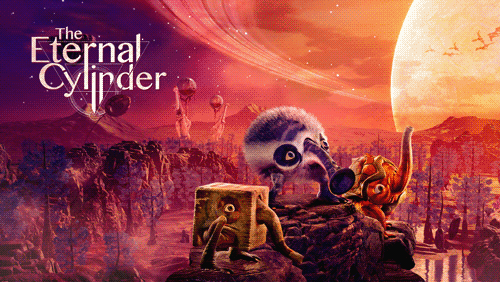
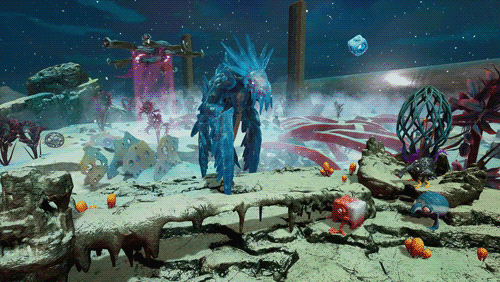
The Eternal Cylinder
Release:
2021
Premise:
You are a freshly hatched alien baby in a bizarre world - one that is being squashed by a colossal metal cylinder. Run.
Gameplay:
Third person survival with resource management and body mutation mechanics.
Comments:
From the same devs as Zeno Clash, this game is equally as surrealistic - if not more so. While some are quick to compare it to the "creature stage" from Spore, the similarities are only surface level. Eternal Cylinder is much more fleshed out, featuring inventory management, upgradeable stats, hunger and thirst which affect stamina, and of course the mutation system.
By eating things found while exploring the semi-open world, you can swap out your body parts for upgraded versions, mixing and matching to suit your needs. These mutations are essentially power-ups with cool visual presentation. Eat a fish to get webbed feet, allowing you to swim faster. Crack open a spiny shell to eat the fruit inside, giving your body defensive spikes. You build a herd of friends which follow you around and you can swap between which one you control, giving each one different mutations for different situations. There are more than fifty of these mutations in this game, and there are plenty of strange plants and animals to encounter as well. Plus, this game gets bonus points for having an in-game encyclopedia that gives detailed write-ups for the many creatures and resources found within the world, even going as far as to give organisms binomial names and delve into light speculative biology.
Of course, I can't forget to mention the story. A giant cylinder is smooshing your world like a steamroller, and you have to survive. A simple premise gives way to a dramatic adventure with plenty of memorable moments, twists, and surprise reveals - all narrated by a charming Attenborough-esque voiceover. Seriously, the story is the last thing people will talk about because they're too busy focusing on the wacky visuals (which is fair, this game is a feast for the eyes), but the devs really did put a lot of effort into the narrative side of things and it doesn't dissapoint.
With all that said, games by ACE Team tend to be rough around the edges and this one is no different. My biggest complaint is that the game ends up overstaying its welcome - somewhere around twenty hours, it has a great amount of content but the gameplay starts to feel really repetitive by the end. Still, though, it's a super unique game and one that deserves more attention.

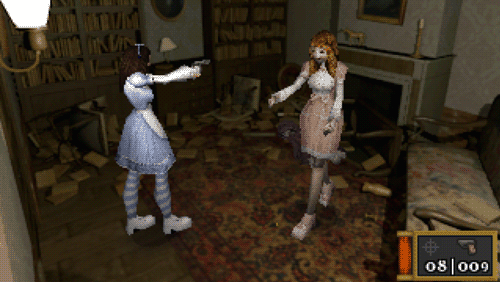
Alisa
Release:
2020
Premise:
An old school survival horror game about trying to escape a mansion filled with killer dolls.
Gameplay:
Fixed perspective tank control survival horror - like Resident Evil.
Comments:
I've never played old survival horror games before, but this game made me realize that maybe I should! From tank controls to pre-rendered backgrounds, it manages to authentically recreate the feel of the games that inspired it (or so I'm told).
It has plenty of replayability too - I don't often replay single palyer story games, but I've finished Alisa four times. In order to see all the content, you have to replay it at least twice - that might sound annoying but you keep all your gear from previous playthroughs. So, while my first run took more than ten hours and involved lots of sneaking, planning, and dying... My second run was much shorter as I used the endgame gear to gun down anything that moved.
Obviously, a game designed to mimic a genre from the PS1 era is going to feel clunky, so this title might not be for everyone. But if you're into that kinda thing, this game is for you.
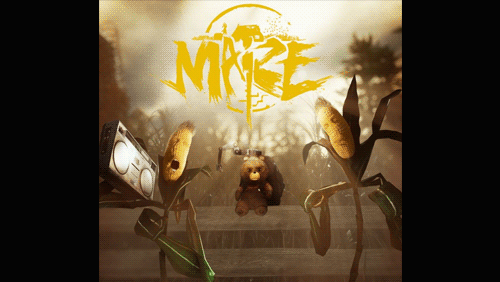
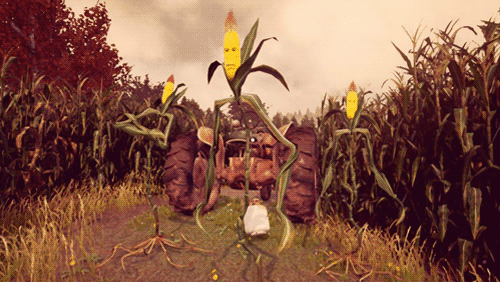
Maize
Release:
2016
Premise:
You wake up on an abandoned farm and find a secret laboratory hidden beneath it. And it's inhabited by... sentient corn???
Gameplay:
First person walking sim with light inventory puzzles.
Comments:
A truly bizarre concept that feels like it was derived from a random word generator, this is the sort of creativity that I wish there was more of in the game industry. While the gameplay is simple and the runtime is only a few hours, I was still satisfied with this experience. It does everything it needs to do without overdoing it, and it remains charming the whole way through.
Since this is meant to be a "funny game", we should probably talk about whether or not it actually succeeds at doing that. Many games attempt to be funny, but most just end up annoying instead. So, does this game suffer the same fate? Thankfully not - for the most part. The corn people have a very "Monty Python" style of dialogue which I personally enjoyed, and I was amused by the way that the two laboratory owners would passive aggressively argue with each other by leaving sticky notes everywhere. There are some pretty great moments which I really don't want to spoil, so you'll just have to see them for yourself. HOWEVER, there is a certain character that many will quickly begin to find annoying. You can probably guess who it is just from watching the trailer. Unfortunately he is your sidekick, so you can look forward to him calling you "stupid" in a fake Russian accent for the whole game. This is really the only majorly bad "joke" in the game though. Thankfully. The only other complaint I could make is that there's sometimes too much downtime in between interesting events.
But when those interesting events do happen, it's great! You get treated to nicely animated cutscenes, something that is rare to see in indie games. The ending cutscene is even a good old-fashioned, highly compressed pre-rendered video. Stuff like that is dated but charming, not something I'd expect to see in a 2016 release but a welcome sight nontheless.
Anyways, this is a neat little game that's got soul. It's good if you're looking for something short and relaxing to play over the weekend, but the price they ask for is a bit high considering the length of the game. Buy it if you got tha dough, otherwise wait for a sale.
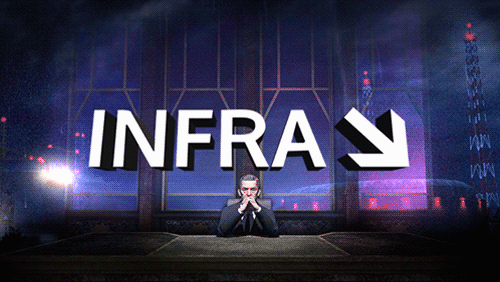
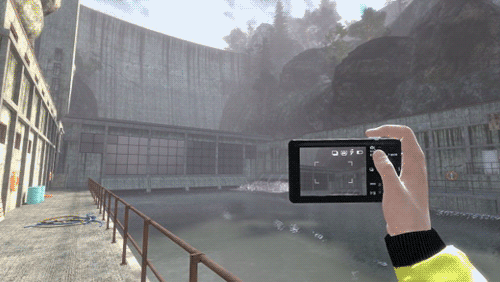
Infra
Release:
2016
Premise:
You're a structural analyst inspecting your city's infrastructure... and you're about to have the worst day of work ever.
Gameplay:
First person exploration with puzzles.
Comments:
This game starts out a little slow but MAN does it ever go places. Lots of places. You'll get at least twenty hours of gameplay if you don't rush through - and considering the amount of missable secrets and side-content, you really shouldn't be rushing. This is a game all about exploration, so sprinting through it as fast as you can kind of defeats the point of playing it.
So what does a game where you plays as a structural analyst actually entail? Well, as stated above, you spend a lot of time exploring urban landscapes. From abandoned factories to active subway systems, the game has a great variety of locations. But it's not just a walking sim, you also have to solve the occasional puzzle, be it Myst-style logic puzzles or classic Source Engine physics and platforming puzzles. There's also the camera mechanic. As a structural analyst, you ARE expected to analyze structures, so the game has a sort of "invisible scoring system" that gives you points whenever you photograph a damaged area. These points don't really matter, but they do give you achievements if you're into that kinda thing.
One thing I really want to stress is just how weird this game can get. There's conspiracy theories, hallucinogenic fungus infestations, and bizarre gated communities that operate on rules separate from the outside world. You can find all sorts of secret documents detailing the corruption found in the city's industry that has resulted in so much of the infrastructure literally crumbling beneath its own weight. Besides the main story experienced by the player, there's a more elaborate narrative unfolding behind the scenes for those who look for it. I could go on and on about all the strange discoveries you can make in this game, but that would be a stupid thing to do. Don't spoil it, play it for yourself!
Another aspect of the game that I love is the atmosphere. If you've ever watched any urban exploration videos on YouTube, you'll know what to expect. Heading deeper and deeper into an old mineshaft or picking through an abandoned steel mill is fun but slightly creepy, and the detailed environments really help with that. For a game made in Source Engine, it looks pretty good. There's also plenty of humor in the game, but luckily it holds back on the funny stuff enough that you can still appreciate it in a more serious way.
Okay, that's enough rambling. In summary: This game is awesome, go check it out.
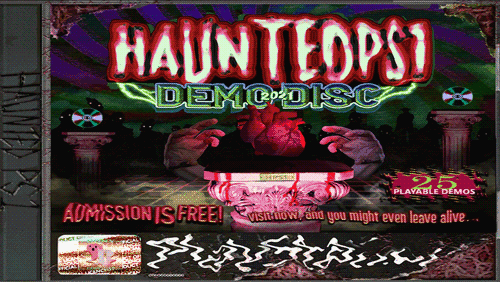
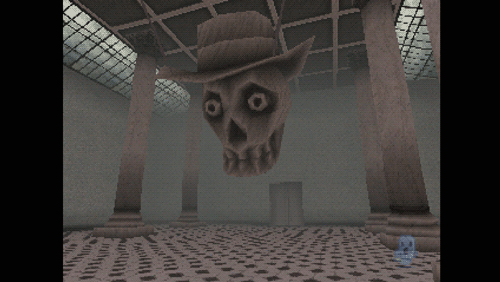
Haunted PS1 Collections
Release:
2020 onwards
Premise:
A collection of retro-styled indie horror game demos, accessed through an immersive 3D hub. AND IT'S ALL FREE!!!
Gameplay:
Each demo is different - plenty of genre variety.
Comments:
Demo discs are back! Starting in 2020, the Haunted PS1 demo disc has put out a new release on a (mostly) annual basis. The first year featured seventeen demos to choose from and a simple but stylish menu screen. Things quickly grew in scope as subsequent years featured many more demos per release, and of course introduced interactive 3D hub worlds in place of a regular menu.
I'm very fond of these hub worlds, they really add to the experience of exploring the various demos available on each disc. In 2021, you play demos by entering different rooms in a sort of gallery or museum. 2022 has you exploring an abandoned shopping mall where each storefront acts as an entry way to a demo. The 2022 demo disc goes the extra mile by turning the hub world into a game of its own. Some of the demo entrances are blocked off, and you have to open them up by exploring the mall to find different tools or keys to help you progress. None of this stuff was necessary to simply present a collection of indie game demos, but the devs did it anyway because they are clearly very passionate about these projects.
I haven't even started talking about the actual demos yet! As the "Haunted PS1" title suggests, most of these games are horror-oriented and tend to have low poly graphics, although they don't necessarily aim to look like an actual PS1 game. There's a great variety in genre and tone, from moody walking sims to old-school survival horror to cutesy cartoon games. Even if you're not the biggest fan of horror, I still urge you to check it out because there's some cool non-scary games in there too - there's also content warnings for each demo to let you know what you're getting into.
If you're curious about all this but don't know where to start (and are in the mood to watch a lengthy YouTube video), I would suggest taking a look at Izzzyzzz's summary of the 2021 demo disc, or Nexpo's video where he discusses his favorite demos from each year. And if you don't feel like sitting through those videos, why not check out the official trailers? They're well made and goofy, plus they give you a quick glimpse of each demo featured in the collection. (2020, 2021, 2022)
Some of my personal favorites:
Gob - A point and click adventure with a very unique art style about a trash goblin who lives in the sewers.
Ghastly Goodies - A trick-or-treating adventure gone wrong.
Protagoras Bleeds - Resident Evil style survival horror.
Future Reality Racing League - A hovercraft racing game with body horror elements and an awesome soundtrack.
I've only talked about HPS1's demo discs here, but they also do a yearly "Madvent Calendar" - 25 bite-sized horror games to play during December. I've written enough already, go play these games! They're FREE!!! They can be found on itch.io, click here.
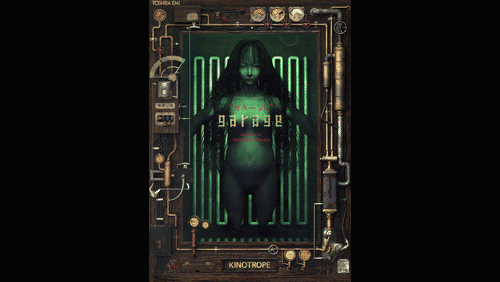
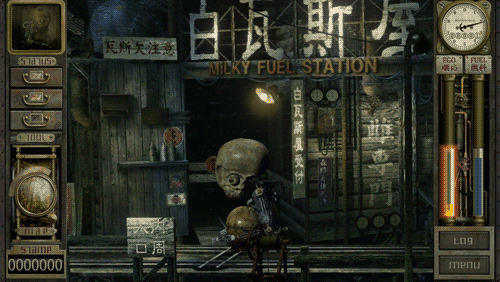
Garage: Bad Dream Adventure
Release:
1999
Premise:
Use a machine to enter your own subconscious and bare witness to one of the most unique, unsettling and dreamlike settings in all of gaming.
Gameplay:
Point and click adventure.
Comments:
This is a truly strange game that was almost lost to the sands of time. It was originally only released in Japan in a small batch of physical copies. Virtually unknown, it slowly managed to amass a small following on the internet based off of screenshots and trailers that had been uploaded. Some fans pooled together money to buy one of the few physical copies of the game so that they could make a translated version. This unofficial fan translation was uploaded online and seemed to cause the original developers to realize that there was an actual fanbase for their weird old game. They created a crowdfunding project in 2020 to re-release the game with a full translation, added content and HD graphics. And, as of 2021, the game is now on Steam as well as iOS and Android! This was big news for me, it was always sort of "the one that got away" and I never thought I'd actually get to play it. Now that I have played it, what did I think?
First off, I was surprised by how much thought was put into this game's strange little world. I figured any dialogue would be vague or nonsensical like in Hylics, but it turns out all the characters have a lot to share about the history and inner workings of the world you're in. There's all sorts of notes and posters and non-essential NPCs you can interact with to learn about the strange and enticing setting of the game. And aside from the expected point and click mechanics, there are other systems in this game that add more depth to your playthroughs.
One of those systems lets you upgrade your body with mechanical augmentations made from components which are unlocked by progressing through the story. You also have to earn currency by fishing for frogs and crabs (yes, there is a fishing minigame) and some parts of the game require you to grind for cash, but I never found it to be too overbearing. There's a ton of variety in the creatures you can catch while fishing, including rare and ultra-rare variants which provide a nice dopamine hit when you find one. Even though I took my time with the game, I still never managed to catch every one of them. Turns out there's actually a lot of things you can miss out on in this game.
Missable content is not necessarily a bad thing, it gives you incentive to play through the game more than once. That's the mindset you should play this game with - it's not possible to 100% it in one go. Secret routes are unlocked by talking to specific characters at specific times, so it's very easy to miss out on side quests. But this approach also helps the world feel more alive, as people move around and change states independent of you. One thing I found strange was the in-game achievement system. You get rewarded an item any time you unlock an achievement, which is nice and all, but some items that are mandatory for progression in side quests and even the main story are also locked behind achievements. It's a bit of an immersion breaker.
This re-release supposedly adds a lot of new content, though I can't say for sure what is new and what isn't as I never played the original. One thing that I do know is new is that interactable parts of the environment are now highlighted with an outline, and your inventory items will automatically be given to the characters that need them once you approach them. This is massively helpful as there are like twenty plus characters you have to keep track of in this game. There's also a newly added "chat log" for every conversation you've had and a map to help you navigate the somewhat confusing layout of the world. These additions REALLY help the overall experience feel a lot more smooth and a lot less like the 90s point and click bullshit you might expect.
I've already written a lot, so I should wrap this up. I still wanted to talk about the amazing art direction, the intriguing way the story plays out, the game's deeper psychological symbolism and more... but I've said enough, I think. The screenshots alone should be enough for you to tell whether or not you'll like it. It's a special game that was almost completely lost, and it's worth playing at least once.
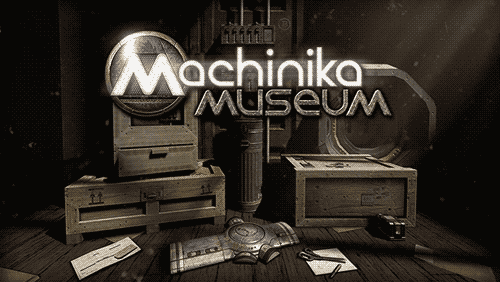
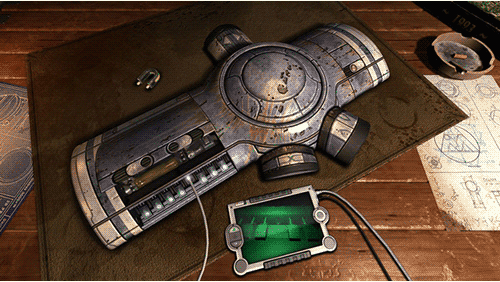
Machinika Museum
Release:
2021
Premise:
You work in a museum that receives shipments of strange alien machinery from other worlds. It's your job to reverse-engineer these machines and figure out what they do.
Gameplay:
Mechanical puzzle solving - very similar to The Room series.
Comments:
This is a little hidden gem that was originally designed as a mobile title, but is also available on Steam. It's short (I beat it in about 3 hours) but it's also cheap. Essentially, if you like The Room series, you'll definitely like this game too.
You are presented with various strange sci-fi devices, and you kinda just orbit the camera around them and fiddle around with the various buttons and switches on them until you can get it to work. The puzzles are all pretty easy, which might be a downside for some, but generally the low difficulty creates a smooth experience, never getting caught in one place for too long. Sometimes it's nice to just play something quick, easy and chill. If you're like me, you'll enjoy the satisfying feeling of clicking various metallic parts into place, aligning gearwheels, powering up circuits, etc. I think this is one of those games made for a specific type of person, and they'll be able to tell it's for them just by this description.
It is a little bit rough around the edges, however. The studio that created the game is fairly young, and it was also originally intended for mobile platforms. So, the graphics look a little dated (more 2014 than 2021) but they do the job just fine. Sometimes the mouse controls are a little janky, and there's an immersion-breaking "share on social media" button whenever you finish a chapter. BUT, like I said before, these little signs of mobile-first development aren't enough to ruin the whole experience.
The game also has a story to tie things together, it's basic but honestly that's all you need for a game like this. Just a little context to give purpose to what you're doing and to create atmosphere. A sequel called "Machinika Atlas" was also released, but honestly it's not quite as good as the first game sadly.
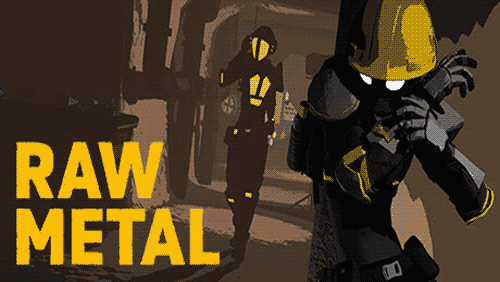
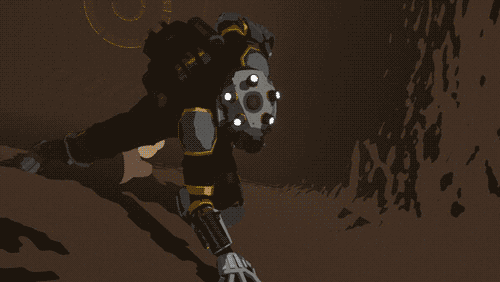
Raw Metal
Release:
2024
Premise:
You are a scrap scavenger who is infiltrating a sci-fi mining operation. Stealth your way to the deepest depths of the mine and uncover its darkest secrets.
Gameplay:
MGS1 style top-down stealth mixed with beat-em-up third person combat plus some roguelike elements too.
Comments:
I found out about this game because YouTube randomly recommended its trailer to me a few days after it had come out. I was instantly hooked by the cool setting and art style, and within minutes of watching the trailer, I had downloaded the demo. After putting several hours into the demo, I bought the full game. It's not often that something exciting like this shows up completely out of the blue for me. So is it any good?
Fittingly enough for a game that takes place in a mine, it's a rough gem. It's made by what I assume to be recent college grads and it's their first game. That means it's got some design choices that make you think "why did they make the game like this??". But ultimately, this is still a good game, that's why it's on this page. That being said, I want to go over the problems I have with it.
First things first, I'll explain the gameplay structure. Your goal is to get to the bottom of a deep mining operation. Each floor, the elevator stops and you need to sneak around the floor to find the keycard that will let you continue, punching out anyone who sees you. It's more of a beat-em-up than a stealth game, really. While sneaking through each level, you loot currency (called "Grymite") and wearable gear items. And then (theoretically) extract and (theoretically) use your new items to help you get to deeper levels. Except this game has a permadeath system where you lose everything you looted if you die. And it's pretty easy to die, any fight against more than one enemy is very risky. So you'll end up dying over and over again, losing your gear and money and making zero progress in the process. You ARE able to regain your lost gear by going to "contraband stations" on certain levels, but of course you have to spend currency to skip to those levels in the first place.
The requirement of paying Grymite to skip past levels you've already beaten is probably this game's singular biggest problem. It feels like you're always short on cash and, at least in my case, a significant amount of my playtime was spent just grinding for more. But at the same time, if skipping levels was free, I think the game would be too short honestly. So maybe the solution would be to have you keep a portion of your looted Grymite when you die, allowing you to feel like you're still making a little bit of progress from an unsuccessful run. But all of this is basically pointless to talk about because after writing all this, the devs have sinced patched the game to add in a huge amount of difficulty customization options. Not just "easy, medium, hard", you can tweak every little thing about the game. Including fixing all of the gripes I had above. I'll rewrite this whole part when I feel less lazy lol.
Besides all that, the other problems I have with the game aren't as serious. Some of the items you can find feel sorta useless, the first two bosses are disproportionately difficult, the story could use a little more fleshing out. And it gets repetitive at times, but the aforementioned future update might fix that. Anyways, let's start talking about why I actually like this game now.
First, it's super stylish. Cell shaded art and slick UI, cool sci-fi character designs that remind me of stuff you'd see in old Flash games, and an adaptive soundtrack with cool electric guitar riffs and intense drum and base elements. I especially like all the different designs of the equipable gear items in the game. Second, despite all the stuff I complained about above, the core gameplay is still really solid. The combat is tough but fair - you will notice yourself objectively improving over time - and despite having to fight the same enemies a million times, it's still fun to test out new builds or find the quickest way to finish a fight. Third, I just like the game's style of writing. The guards have amusing context-specific lines, there's some funny jokes here and there, and when the game wants to be serious it can build up hype pretty well. The bossfights are a great example of this, and the ending sequence too - it's worth playing through the rest of the game to experience it.
So yeah, it has some wrinkles to iron out, but for a first time release, these devs did a really awesome job. I'm excited to see what else they cook up in the future.
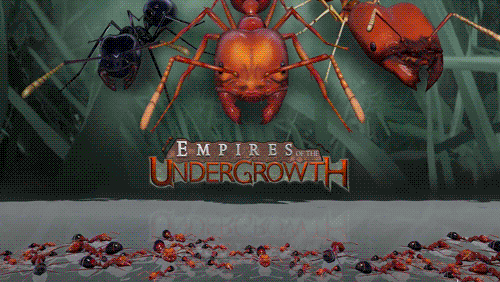
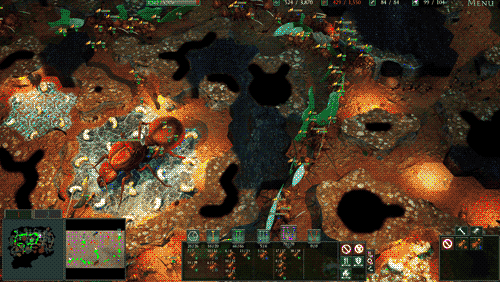
Empires of the Undergrowth
Release:
2024
Premise:
Build and manage an ant colony to overcome different challenges. With multiple different species of ants and gameplay mechanics based on their real-life abilities, this is a game for entomology nerds.
Gameplay:
Real-Time Strategy
Comments
I'm not much of an RTS player myself, but I was drawn to this game because of its realistic depiction of ants (and bugs in general). Outside of nature documentaries, you really don't get a lot of media that focuses on bugs that actually look and act like bugs - instead you usually get shit like the Bee Movie or whatever. That's why this game was refreshing to see.
Due to my lack of experience with RTS games, I can't really speak too much about the quality of the gameplay mechanics or anything like that, from what I understand they're a bit simple compared to other games in the genre. Really the main reason you want to play this game is if you think bugs are cool. It's a game for bug enjoyers. Like me. Aside from ants, the game features plenty of other arthropods as NPCs - a pretty impressive variety, actually. And the devs included some surprisingly uncommon picks too, like mantis flies and velvet worms, you don't normally see those kinds of animals in video games. The best part is that there is a sort of nature documentary narrator that commentates over your gameplay, and every time a new creature shows up, he shares some facts about it like its scientific name or combat tactics.
The inclusion of the nature documentary narrator turns this game into a bit of an educational experience, interestingly enough. Same with some of the gameplay mechanics - each ant species has a different playstyle inspired by their real life counterparts, so you might learn a thing or two about bugs just by figuring out the game mechanics. For example, before playing the game, I just thought that Leafcutter Ants collected leaves to feed themselves. But now I know that they actually use the leaves as a starting point to cultivate their own special domesticated strain of fungus, which is their only food source. And a second type of fungus can start growing on their food fungus, this second type is parasitic, so the ants have to carefully tend to their gardens to stop this from happening. I also learned about Matabele Ants, which I didn't even know existed. They have the unique behavior of carrying their wounded allies away from battle and back to their nest to nurse them back to health. Cool stuff!
Besides bug facts, the game also has an entertaining story mode. You have an ant colony living in a science lab, and there are two scientists which occasionally do experiments on you. Things get progressively more insane as time goes on, and the ending is seriously crazy. On top of that, there is also a generous helping of arcade missions that change up the gameplay in interesting ways. Some examples include a mission that plays similar to that "Age of War" flash game, a wave-based survival mode, and one where you play as beetles and have to free your beetle brethren from their ant captors. I recommend not touching these until you finish the story mode, since by then you will have had a lot of experience with the "normal" style of gameplay and will appreciate these new game modes that much more. I still haven't played all of them, there's so many to choose from!
Like I said earlier, I don't know whether or not a hardcore RTS fan would be satisfied with this game's core mechanics. Instead, its whole appeal is that it's all about bugs - something that will probably put a lot of people off. But for those of us who have an interest in entomology, this is a great game to check out.